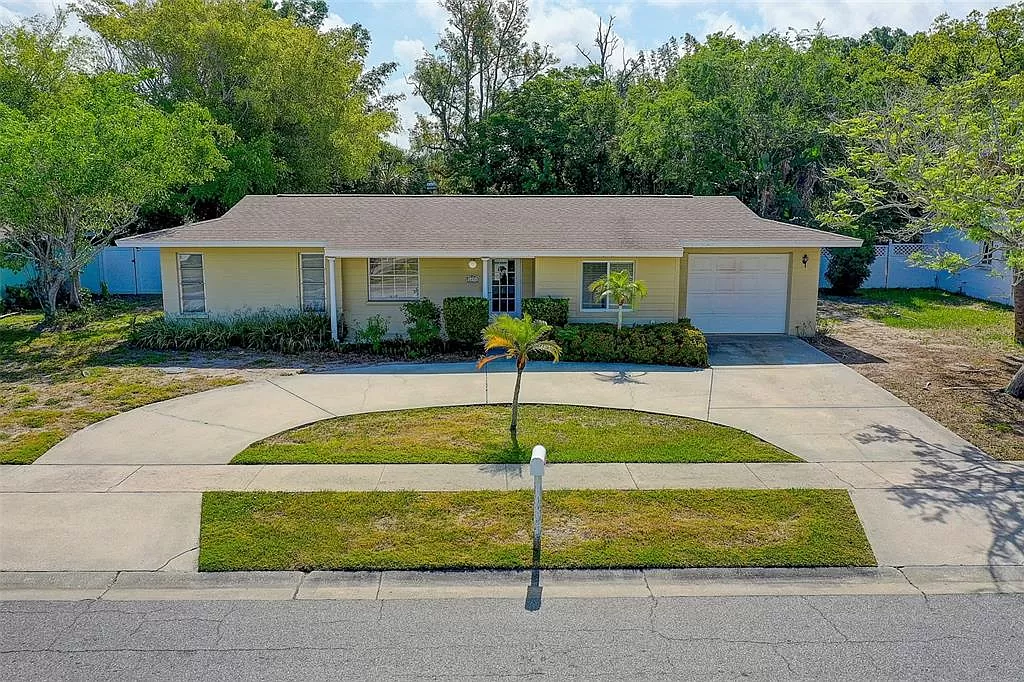Editorial Integrity
Making informed real estate decisions starts with having the right knowledge. At HomeAbroad, we offer US mortgage products for foreign nationals & investors and have a network of 500+ expert HomeAbroad real estate agents to provide the expertise you need. Our content is written by licensed mortgage experts and seasoned real estate agents who share insights from their experience, helping thousands like you. Our strict editorial process ensures you receive reliable and accurate information.
With Texas being the second-largest state in land and population, there are plenty of cities to choose from if you’re looking to invest in real estate.
Real Estate Investing in Texas has become almost a no-brainer. Since 2010, the population has increased by 3.5 million, more than in either Florida or California. This equates to a million and a half new homes.
In this article, we’ll discuss how to invest in real estate in Texas and some of the best rental markets for investment purposes!
Table of Contents
What Are The Requirements To Buy A House In Texas?
The first step to buying a house in Texas is understanding the requirements. Fortunately, they’re not too different from other states in the US. The basic needs are:
- You must be at least 18 years old.
- You must have a Social Security Number or an Individual Taxpayer Identification Number.
- You must have a verifiable source of income.
- You must have a good credit score of 620 or above.
- Proof of employment
- Financial history (Tax returns, pay stubs, and W-2s for the previous two years)
- Recurring debts, if any.
- Bank statements and information about other assets
- Photo ID
- Rental history
- Year-to-date profit and loss statement if you’re self-employed.
- You must have enough money for a down payment (3.5% of the purchase price) and closing costs.
- You should have a mortgage pre-approval.
If you meet these requirements, you’re ready to start the process of finding and financing your dream home in Texas!
What to Look For When Buying An Investment Property in Texas?
When looking for an investment property in Texas, there are a few key things you’ll want to keep in mind.
- First and foremost, you’ll want to find a property in an area with high population growth. This is because population growth means more renters, and more renters mean more profits!
- Before investing, it is always critical to conduct adequate research. You’re interested in learning about the area’s potential economic growth, market demand, and average housing prices. You should also gather information about your preferred neighborhoods. For example, average rent cost, local school ratings, crime rate, and average property value.
- Prepare to make a substantial down payment toward the investment property. Most lenders require a 20% down payment to finance an investment property. Some lenders require a down payment of at least 30%. In general, the larger your down payment, the better loan terms you’ll be able to obtain to finance your new home.
- Homeowners with significant equity in their primary residence may consider refinancing their mortgage and using the cash to put down on an investment property. Choosing finance terms that allow using gifted funds is a better option for other homeowners.
- Finding a property in an area with low vacancy rates is also important. This ensures that you’ll always have tenants and won’t have to worry about your property sitting empty.
- Hire a professional building inspector once you’ve decided on a specific property. This is necessary to determine the age and condition of the property and its facilities. Conducting a thorough inspection allows you to identify potential issues before purchasing. You can then decide how much money you need to spend on renovations. This enables you to evaluate your financial budget and the property’s purchase price.
- Finally, you’ll want to ensure you’re getting a good deal on the property. Be sure to compare prices in the area to ensure you’re not paying too much.
The Benefits Of Owning An Investment Property in Texas
There’s a reason why so many people are interested in investing in Texas Real Estate. Here are just a few of the benefits:
1. There is No Income Tax In The State.
Many people are moving to Texas because there is no state income tax. This makes the state an attractive option for many individuals and families looking for a new place to live.
It generates revenue through property taxes rather than income taxation. Texas is now one of seven states in the United States where residents are not required to pay state income tax.
Despite some homeowners’ complaints about the state’s disproportionate income generated through property taxes, the overall tax burden on individuals in Texas is much lower than in other states. Furthermore, there are numerous tax breaks for start-ups and small businesses looking to relocate to Texas.
2. A Thriving Real Estate Market
When the housing bubble burst in 2007-2009, Texas Real Estate Market fared relatively well. This is because the state has stricter rental regulations.
In Texas, home prices increased by nearly 20% year over year, while median rents for three-bedroom homes increased by 15% or more in some cities.
Between 2010 and 2020, Texas added nearly 4 million new residents, representing a 16% increase in population. Strong in-migration and a thriving economy are two of the many factors driving rental property demand in Texas.
As an investor looking for Texas real estate, you’ll discover that there’s something for everyone. From stable class B and C multifamily communities in secondary markets to modern class A apartments in the heart of major cities.
3. Exciting City Life
Did you know that Texas is home to six of the twenty most significant cities in the United States?
First and foremost, Austin is the fastest-growing city in the United States. Then there’s Dallas, which is well-known for its oil and cotton. Of course, Houston is known as the “Space City” due to its ties to NASA.
Along with these global cities in Texas, there is Fort Worth, San Antonio, and El Paso, all of which have much to offer. We find many investment opportunities in secondary and tertiary markets in Texas apartment investing that others overlook. There is money to be made with proper due diligence and a careful investment strategy if one knows where to look. And we do.
But it’s not just Texas’ diverse and vibrant cities that draw visitors from around the world. But it’s also the low cost of living that the low cost of living has made Texas one of the top destinations for job seekers and renters.
4. Family-friendly and diverse
The majority of those looking to relocate to Texas are young families. And it’s easy to see why!
With no state income tax and reasonably priced housing, this particularly appeals to young families and couples looking to settle down. The influx of families has resulted in a family-friendly atmosphere throughout the state.
You’ll also discover that Texas is a welcoming and diverse state. As a result, there are thriving multicultural communities all over the state.
5. A Stable Economy
The Texas economy is booming, which is good news for real estate investors. With a population of over 28 million people, the state has the second largest economy in the United States.
The state’s economy is diverse and includes agriculture, energy, manufacturing, and healthcare sectors. The state is also home to several Fortune 500 companies, which provides stability and job security.
The state’s economy is growing faster than the national average. This is good news for real estate investing as it results in population growth, leading to increased housing demand.
Investing in Texas real estate has many benefits. The state has a diverse and thriving economy, a growing population, and a stable housing market. Texas is a great place to start your search if you’re looking for an investment property!
If you have any questions about investing in Texas real estate, HomeAbroad is the place to go! We can help you find the perfect investment property and provide you with all the resources you need to get started. Give us a call today!
Steps To Buy A Home In Texas!
Buying an investment property or a home in Texas is similar to the process in other states. Here are the basic steps:
Note: If you are a foreigner buying property in Texas, then here is a complete guide for you: Can Foreigners Buy Property in Texas? Everything You Need to Know!
Step 1: Save For A Down Payment
Your down payment is the first portion of the purchase price of your home that you pay at closing. Your mortgage lender will pay the remaining balance.
Mortgage lenders in Texas typically require a down payment of 20% of the purchase price. That works out to $63,047 for a $315,235 home, which is the average home value in Texas.
You do, however, have options for lowering your down payment.
Government-backed loans, such as VA and FHA loans, allow you to contribute 0% and 3.5% of the purchase price of your home, respectively. Conventional loans allow for 3-5% down payments (though the minimum varies by lender).
Private mortgage insurance (PMI) is required on conventional loans until the loan balance reaches 80% of the purchase price. On the other hand, FHA loans necessitate the payment of a mortgage insurance premium (MIP) for the life of the loan.
Annual mortgage insurance costs about 1% of your mortgage balance. Rates, however, vary depending on your down payment and credit score. Typically, your mortgage insurance payment is added to your monthly mortgage payment.
Mortgage insurance is not required for VA loans. Instead, you’ll pay a VA loan funding fee ranging from 1.4% to 3.6% of the purchase price at closing.
Step 2: Find A Real Estate Agent
Your real estate agent will be your most important ally during the home-buying process. Having the right real estate agent on your side can alleviate the stresses and frustrations of being a buyer in a seller’s market. Realtors are focused on matching your budget with properties that meet your needs and frequently know when new homes will hit the market ahead of time.
In addition to finding and showing you properties, your agent will assist you in making offers, negotiating contracts, and navigating the closing process. They can also recommend other service providers, such as title companies and home inspectors, to assist you in purchasing a home in Texas.
To find the best possible real estate agent, interview multiple candidates and ask about their knowledge of your target neighborhood, experience in your price range, and communication style.
Don’t choose an agent hastily. Instead, spend the time researching and interviewing multiple real estate agents with experience in the neighborhoods of interest.
Step 3: Get Pre-Approved For A Mortgage
Once you know how much house you can afford and have found a real estate agent, it’s time to get pre-approved for a mortgage. Getting pre-approved is essential in the home buying process because it gives you a clear idea of your price range.
A mortgage preapproval letter is an offer to lend you money to purchase a home up to a certain amount. It demonstrates to sellers that you are a serious buyer with the financial means to make an offer on a home.
Before showing you their home, most Texas sellers will require pre-approval.
You are not required to choose a lender right now. You should compare interest rates and preapproval amounts from multiple lenders to ensure you get the best terms when purchasing your Texas home.
HomeAbroad can help you get pre-approval for a mortgage from multiple lenders in Texas. Simply fill out our short online form, and we’ll put you in touch with up to four lenders who can offer you pre-approval for a mortgage.

Pre-qualify for a US mortgage as an international buyer.
No US credit history needed.
Step 4: Choose the right location
The average home value in Texas is currently $315,235, but don’t worry if that doesn’t exactly match your budget. Home prices vary dramatically from city to city and even from neighborhood to neighborhood!
Examine previous home value trends as well. This will give you an idea of how much your home’s value could increase in the coming years.
Research each city and neighbourhood:
- Safety statistics
- School ratings
- Proximity to amenities
- Commute times
- Tax rates
- Sales trends (rising or falling home prices?)
- Average rental rates (if you’re considering investment properties)
Step 5: Search for your dream home!
The fun part of the home-buying process is looking for homes in Texas! You’ll see various homes and figure out what you want in a house.
Make a list of everything you want in a house and rank them in order of importance. The essential items for you should be at the top of the list. This will assist you in distinguishing between “must-haves” and “nice-to-haves.”
Your agent can help you determine whether your desires are realistic for your budget and preferred neighborhoods or if you need to rethink your criteria.
Keep the following important factors in mind to help you narrow your options and find your new home more quickly:
Must-haves vs. Nice-to-haves: A perfect home does not exist. When looking at Texas real estate, you’ll need to decide which criteria are non-negotiable and which are simply lovely extras.
Housing inventory: Depending on the season and patterns in the Texas cities you’re interested in, you may have fewer options. In Texas, for example, June is traditionally the month with the most homes for sale. Searching during this time of year may provide you with more options and a better chance of finding your dream home. In contrast, December has the fewest votes in Texas.
Step 6: Make An Offer On The Property You Like
When you’ve found the perfect Texas home, it’s time to make an offer. Your real estate agent will assist you in crafting an enticing offer that will give you the best chance of convincing the homeowner to sell to you.
In Texas, homes are currently on the market for 60 days before going under contract. However, every market experiences seasonal fluctuations. Homes are snapped up more quickly during the busier months.
Historically, Texas homes sell the quickest in June, with the average property on the market for only 52 days. If you are looking to buy a house around this time, you should be prepared to move quickly and possibly make multiple offers before yours is accepted.
Step 7: Get A Professional Home Inspection And Appraisal
A home inspection is essential in home buying, but it’s often overlooked. In Texas, as in most states, the responsibility for ordering a home inspection falls on the buyer. Make sure to hire a certified inspector who has experience with Texas homes.
You should also get a home appraisal to determine the property’s fair market value. This will help ensure you’re not paying too much for your new home.
Having your Texas home inspected by a licensed inspector gives you peace of mind about the property’s condition before you spend thousands of dollars on it. Your inspector should examine the following aspects of the property:
- Roof structure
- Foundation
- Electrical system
- Plumbing
- HVAC system
Appraisals determine the value of a property. If you use a mortgage to purchase your new home, your lender will order a check to ensure the home is worth the money it is lending you.
Step 8: Sign The Buying Contract And Get A Title Report
The final step in buying a home is signing the contract. This document will include all the details of your purchase, including the price, closing date, any necessary repairs, and who is responsible for paying which fees.
You should also get a title report at this time. This report will show any outstanding liens or encumbrances on the property. This is important to know before you purchase a home, as you don’t want to be responsible for someone else’s debt.
Step 9: Obtain Home Financing through US Mortgage Options
Now that you know how to buy a home in Texas, it’s time to start financing your purchase. Your mortgage underwriter is the professional authorized to assess if you qualify for the mortgage loan based on the lender’s underwriting guidelines. An underwriter will verify your income, assets, employment, and other information regarding your mortgage application during the underwriting process and decide to approve or deny the loan. The underwriter can request additional documentation as needed to make this decision.
Big banks, mortgages, and private lenders are the three main types when financing an investment property for the first time.
Big banks are worth considering if you have a strong borrower profile and a large down payment. Big banks have less flexibility, but this could be a streamlined process if you have experience investing in real estate.
Private lenders, on the other hand, typically provide more flexibility and less stringent qualification criteria. However, interest rates are frequently extremely high, and loan terms are not always advantageous. Private lenders are frequently willing to take on more risk in exchange for a higher return, which is passed on to you, the borrower.
HomeAbroad is an online platform that offers foreigners and residents of the United States access to real estate agents and home financing options in Texas. If you’re ready to buy a property in Texas, contact us now!
Step 10: Close On Your New Home
To close on a home in Texas, you’ll need to go to the title company to finish some paperwork and settle your closing costs. Prepare to spend about an hour reviewing and signing several legal documents on the closing date. This paperwork is required to finalize your loan and transfer the title, so take your time to ensure all the information is correct. Among the primary forms you’ll need to fill out are:
- Your most recent loan application
- The act
- Promissory note for the mortgage
- The statements of disclosure
You’ll pay your closing costs to the title company once you’ve completed the paperwork. The company will handle distributing the correct funds to each recipient to whom you owe money.
Your closing fees are divided into Lender Fees, Title and Escrow Charges, Prepaid Costs, and other miscellaneous costs.
Top 5 Best Real Estate Investment Markets in Texas
With so much ground to cover, choosing where to invest in Texas real estate can be challenging. To help simplify your decision-making process, we’ve outlined some of the best real estate markets for investment opportunities.
Houston
Houston, Texas’s largest city, has a population of 2.31 million people and ranks 15th on our list of the best places to buy a house in the Lone Star State. Located in Southeast Texas near the Gulf of Mexico, it is the most populous city in Texas and one of the largest in the United States, covering an area of more than 600 square miles.
The metropolitan area is home to over a dozen Fortune 500 companies, including Phillips 66 and KBR, as well as one of the country’s largest ports. The rent-to-home value ratio is 5.4%, the rent-to-income ratio is 1.5%, and the rental vacancy rate is 8.9%.
Some statistics about the city are:
- Population: 2,313,238.
- Population Growth: 9.8%
- Median Sale Price: $315,000
- Change In Sale Price (year over year): 8.0%
- Days on the market: 19
- Tax Rate:1.81%
- House Value Appreciation: 37.2%
- Median Rent (3 Bedroom Home): $1,775
- Rent price increase: 3%
- Households occupied by renters: 52%
- The Median Household Income: $53,600.
San Antonio
San Antonio is located in south-central Texas, near Austin and Houston. The city, which is home to the Alamo, is second-most populous in the state and recently went “all in” on a $55 billion economic development plan to create 140,000 jobs over the next few years.
San Antonio’s job market has been growing steadily for years, and the city’s population is expected to reach 2.5 million by 2040. The rent-to-home value ratio is 5.1%, the rent-to-income ratio is 1.7%, and the rental vacancy rate is 7%.
Some statistics regarding the San Antonio market are:
- Population: 1,529,133
- Population growth: 8.1%
- Median sale price: $283,245
- Change in sale price (year over year): 19.0%
- Days on the market: 20
- Median rent (3-bedroom home): $1,723
- Change in rent price: 14%
- Renter-occupied households: 39%
- Median household income: $53,420
Dallas
Dallas is the largest city in the Dallas-Fort Worth metroplex and has a diverse economy that includes information technology, telecommunications and transportation, and financial services. Over 100 major corporations have relocated their headquarters to the Dallas area since 2010.
The third-largest city in Texas, Dallas is home to 1.3 million people and ranks as the ninth-best place to buy a house. The city’s economy is diversified, with a mix of businesses in sectors such as technology, healthcare, finance, and manufacturing.
Dallas is also known for its Texas-sized portions, which can be good or bad depending on your appetite. The rent-to-home value ratio is 4%, the rent-to-income ratio is 1.1%, and the rental vacancy rate is 10%.
Some statistics about Dallas are:
- Population: 1,338,846
- Population growth: 8.9%
- Median sale price: $410,200
- Change in sale price (year over year): 10.1%
- Days on the market: 19
- Median rent (3-bedroom home): $2,400
- Change in rent price: 20%
- Renter-occupied households: 44%
- Median household income: $54,747
Austin
As the capital of Texas and the live music capital of the world, Austin is a city that has everything–including a thriving economy and a robust real estate market. The city’s population has been increasing in recent years, and it is now the 11th-largest city in the United States, with a population of over 950,000.
Everyone seems to be relocating to Austin these days. The metro area population increased by nearly 22% between 2010 and 2020 and by another 7% last year alone. Austin, dubbed “Silicon Hills,” has seen a rapid influx of high-tech and development firms, including Tesla, Google, IBM, Facebook (Meta), Amazon, and Apple.
Some statistics of the city are:
- Population: 965,872
- Population growth: 21.7%
- Median sale price: $645,000
- Change in sale price (year over year): 21.9%
- Days on the market: 28
- Median rent (3-bedroom home): $2,400
- Change in rent price: 19%
- Renter-occupied households: 61%
- Median household income: $75,752
Fort Worth
Fort Worth is the fifth-largest Texas city and part of the Dallas-Fort Worth metroplex. The city is home to over 880,000 people and has a diversified economy that includes finance, manufacturing, healthcare, and energy.
Fort Worth is the second-most populous city in the Dallas-Fort Worth metroplex and the country’s fourth-most populated metropolitan area. Founded as the center of the Texas Longhorn cattle trade, the metro area now has a diverse economy, a low cost of living, a high quality of life, and a business-friendly climate:
Fort Worth’s real estate market continues to be one of the strongest in the country. The city was recently ranked as the number two best place to buy a house in Texas and the fourth-best place to buy a house in the United States. The median sale price for a home in Fort Worth is $349,000, and the rent-to-home value ratio is 4%.
Some statistics about Fort Worth are:
- Population: 892,221
- Population growth: 24.0%
- Median sale price: $340,000
- Change in sale price (year over year): 21.4%
- Days on the market: 16
- Median rent (3-bedroom home): $1,995
- Change in rent price: 12%
- Renter-occupied households: 41%
- Median household income: $64,567
Things To Know About Before Buying A House In Texas
If you’re considering buying a house in Texas, you should know a few things before making the purchase.
Taxes on real estate
There are many reasons to invest in Texas real estate, but one is the money you’ll owe the government for your new home. Property tax rates vary across Texas, and bills from school districts, cities, counties, and special districts may be included. They also add up.
Because there is no individual state income tax, the government must make up the revenue elsewhere. Be sure to inquire about the annual property tax bills of any home you’re considering.
Dual authority
Texas does not permit dual agency when the same real estate agent represents the buyer and the seller in a transaction. As a result, you can be confident that your real estate agent is solely focused on you.
This is not the case in every state, so ask your agent about their policies before signing a contract.
Seller’s disclosure
A seller in Texas is required to complete a disclosure statement that outlines all defects they are aware of in their home. Be sure to read this report carefully — there may be significant issues you are unwilling to take over.
Closing costs
In addition to a down payment, you’ll need to budget to cover closing costs. In 2021, they averaged around 1.5 percent of the purchase price in Texas, although the seller often pays for the title policy here. Be sure to ask your lender about closing costs related to them, too, which can include an origination fee, underwriting fee, and other additional expenses.
Attorneys
In Texas, you are not required by law to hire a real estate attorney when purchasing a home. However, it is a worthwhile investment: you can ensure your future protection by paying for an attorney’s time.
Weather and climate considerations
When you purchase a home, you must pay to protect your investment. Unfortunately, that bill can be pretty substantial: Homeowners’ insurance in Texas is significantly higher than in most other states.
While Texas is known for having a warmer climate, the winter freeze of 2021 demonstrated that even the Lone Star State is not immune to cold-weather disasters. Over 400,000 property owners filed damage claims after the storm hit- a clear warning for anyone looking to buy property to ensure their policies cover them in worst-case scenarios.
Rental Properties
If you’re looking to purchase a rental property in Texas, you should know a few things first.
To rent out your property, you’ll need to obtain a permit from the city where your property is located. The process and cost of getting this permit will vary depending on your municipality, so check with your local government beforehand.
In addition, you’ll need to purchase insurance for your rental property. This is to protect you if your tenants cause any damage to the property or if someone is injured while on the premises.
Before you purchase any investment properties, be sure to do your research.
Conclusion
Purchasing property is a big decision, whether buying your first home or investment property. Be sure to research and consult with professionals to ensure you’re making the best decision for your needs.
If you’re considering purchasing property in Texas, remember to budget for property taxes and insurance and be aware of the state’s disclosure laws. With some preparation, you can be sure your purchase will be a wise investment.
HomeAbroad is a website dedicated to helping people buy property. We have a team of experts who can help you through buying property in Texas, from finding the right home to understanding the legalities involved. Contact us today to get started!
Frequently Asked Questions
Q1.Is real estate in Texas a good investment?
Yes. Texas continues to attract new businesses — notable names such as Tesla, Oracle, and Caterpillar have all recently announced plans in the Lone Star State — which means it is also attracting new residents. After all, people go to places where they can make money. So it makes sense to purchase a home now. If you decide to sell your home in the future, all indications are that it will appreciate significantly.
Q2. Is it a good time to invest in Texas?
Texas’s current real estate market is strong, and prices will continue to rise in the coming years. So if you’re considering investing in Texas property, now is a good time to do it.
Q3. What should I know before purchasing a home in Texas?
You’re not the only one looking to buy a home in Texas: home sales in the state have increased in recent years. Some markets, such as Austin and Dallas, are fiercely competitive, with average homes selling for far more than their asking prices. Depending on where you want to buy, you may need to be prepared to submit an offer quickly and compete with multiple other bidders.
Q4. What are the risks of investing in Texas real estate?
Like any investment, there are risks involved in investing in Texas real estate. The most significant risk is that the market could correct, and prices could drop, leaving you with a property worth less than what you paid. However, if you purchase a property intending to hold it for the long term, this is not as big of a concern since the market is likely to rebound eventually. Another risk to consider is the possibility of natural disasters, such as hurricanes or floods. While Texas isn’t immune to these events, they are relatively rare.




















